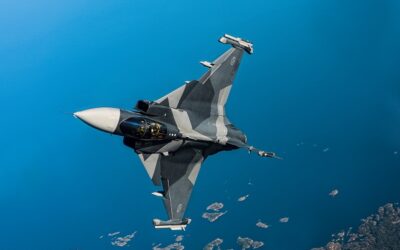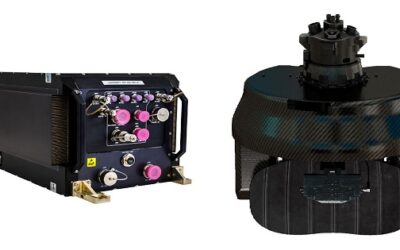An Overview of USSOCOM’s Technology and Materiel Requirements for the Next Decade
As he approaches the end of his tenure in charge of USSOCOM, Gen Tony Thomas is preparing to agree a Program of Objective Memorandum (POM) designed to map out technology and materiel requirements for the next decade.
In line with the US National Defense Strategy, published in 2018, the POM will support the various force components within USSOCOM in their progress to maintain tactical overmatch over their near-peer and high-capability adversaries in areas such as mobility, C4ISTAR, lethality and survivability.
The POM will also focus on interest areas that include, “computing, big data analytics, artificial intelligence, autonomy, robotics, directed energy, hypersonic [weapons], and bio-technology,” with the strategy explaining how “…new commercial technology will change society and, ultimately, the character of war. The fact that many technological developments will come from the commercial sector means that state competitors and non-state actors will also have access to them.”
Addressing delegates at SOFIC 2018, Gen Thomas described how the POM would support SOF operators working at, “the edge of communications and logistics networks plagued with bandwidth and signature constraints.”
“Our challenge is in developing, testing and fielding systems that enable us to make those decisions and take those actions at the right time, rapidly and consistently. In this POM, we will address our future fixed-wing and rotary-wing requirements; we will lay out our path forward on surface and sub-surface mobility and ground mobility; we will define our investments in SOF-specific space and cyber programmes; precision weapons; and cutting-edge communications networks [….] In this rapidly evolving environment, for the purposes of future combat involvement, we should consider the technology and platforms that today’s SOF use as already legacy systems, whose sunset is nearly upon us. Incremental improvements to legacy systems will not give us the advantage we need for future successes,” the Commander stated.
Echoing the requirements of the Commanding General, USSOCOM Acquisition Executive for the Command, Jim Smith, discussed a series of areas of interest due to be explored in 2019 and beyond. These include: Assured Communications; Assured Manoeuvre; Precision Navigation and Timing; Precision Munitions; Counter-Unmanned Aerial Systems; Next Generation ISR; Expeditionary ISR; Next Generation Military Information Systems Operations; Managed Signature; Bio-medical technology; Expeditionary Logistics; and Interoperability with Partner Nation Forces.
Land
USSOCOM’s Program Executive Office (PEO) SOF Warrior is responsible for upgrading the capabilities of ground components across the command. According to SOF Warrior lead, Col John Reim, the ‘current fight’ remains focused on counter-terrorism duties as well as countering peer and near-peer adversaries.
“The threat continues to evolve and we are witnessing some significant challenges, but that’s the main focus here,” he explained to MT, while describing how PEO SOF Warrior continues to spend approximately $1.8 billion a year to support rapid acquisition processes across the command.
In terms of ammunition and small arms, USSOCOM is already benefiting from the domestic production of AK-47 assault rifles following a contract with Century Arms. It is also considering indigenously-manufactured rocket propelled grenades, with further evaluation due to begin in 2019.
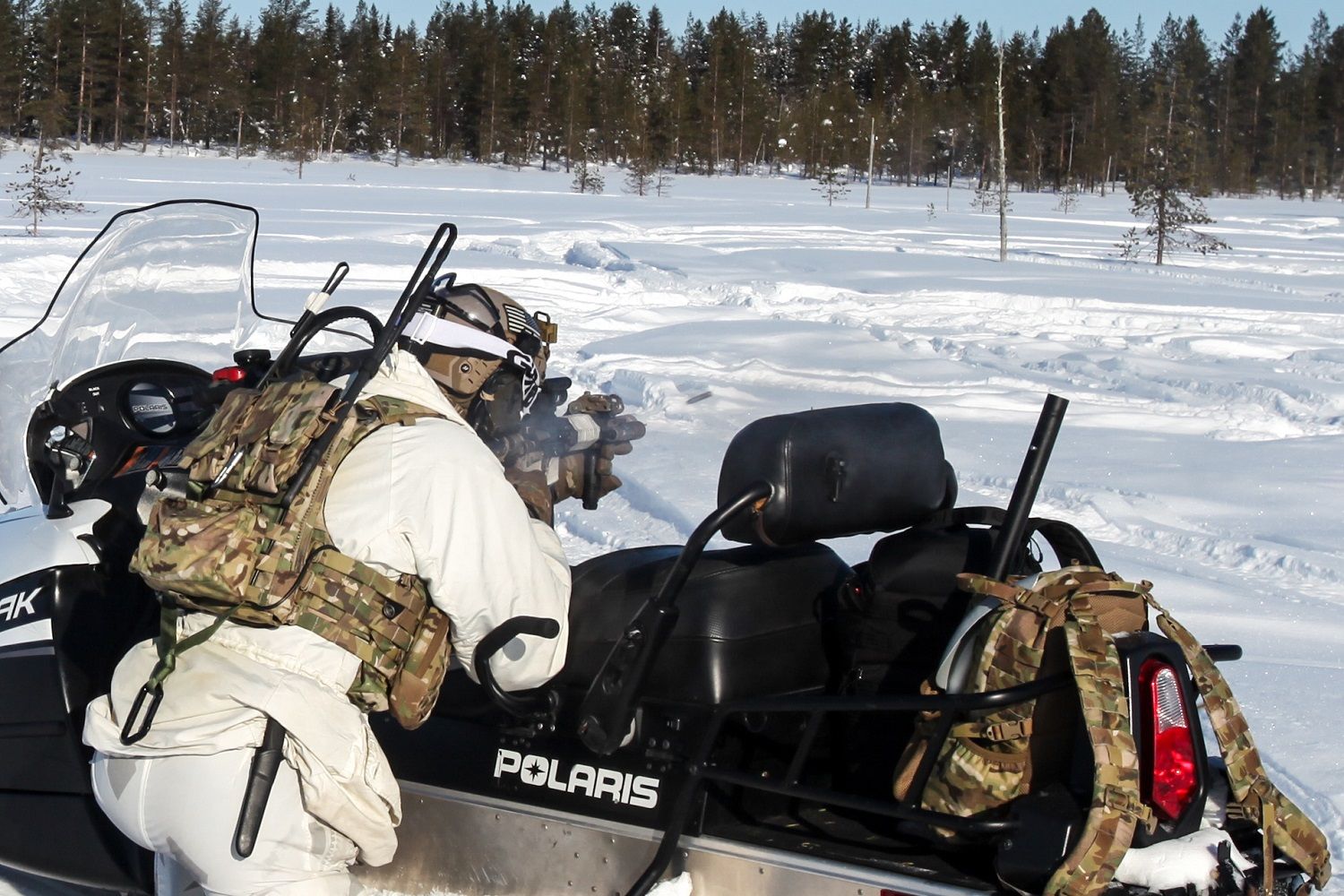
USSOCOM elements continue to support Naval Surface Warfare Center (NSWC) Crane’s evaluation of the Personal Defense Weapon (PDW) conversion kit, following a contract award with SIG Sauer in February 2018. The PDW concept is designed to upgrade the 5.56mm M4A1 carbine into a 7.62x35mm (.300 BLACKOUT) calibre in even smaller form factor for use in covert operations and urban warfare. NSWC is evaluating ten PDW conversion kits based on SIG Sauer’s MCX RATTLER carbine. When upgraded, the PDW will feature a 14cm barrel; total weapon length of 67.9cm; and maximum weight of 2.7 kilogrammes.
Sources associated with PEO SOF Warrior informed MT it was considering publishing an RfP in Q2 2019 as it considers a more extensive requirement to provide PDW conversion kits across the command. Force components benefiting from the procurement will include the US Army Special Operations Command; Naval Special Warfare Command; Marine Corps Special Operations Command; and Air Force Special Operations Command.
PEO SOF Warrior also awarded SIG Sauer a $48 million contract in August as part of a wider rollout of the Suppressed Upper Receiver Group (SURG) technology across the command in 2019 and beyond. An undisclosed number of SURG appliqué kits, which comprises an upper receiver with permanently fixed suppressor, have already been delivered to USSOCOM, with further deliveries due to run through to 2023 as the command considers a total procurement run of 70,000 units. The upgrade however, retains the M4A1 5.56x45mm calibre selection, as opposed to .300 Blackout.
Elsewhere, PEO SOF Warrior is exploiting 6.5mm intermediate calibre ammunition in order to support an Assault Machine Gun (AMG) tender. Next year will also see the PEO identifying a preferred manufacturing partner for this ammunition, with a $20 million contract expected to be confirmed sometime in the third quarter. The AMG aims to replace legacy 5.56x45mm M249 and Mk46 machine guns currently in USSOCOM’s armoury, with an RFI expected in the second quarter of 2019.
Finally, the Light Weight Medium Machine Gun (LWMMG) is also set to feature 6.5mm Creedmoor ammunition as an additional replacement to the M249 and Mk46, SOF Warrior sources added. An RfI is also expected to be released in the second quarter of 2019. Anticipated participants in the programme include General Dynamics Ordnance and Tactical Systems (GDOTS) and Textron Systems.
In terms of mobility, SOF Warrior continues to focus on the provision of rapidly deployable ‘fly and drive’ SOVs. According to programme lead at PEO SOF Warrior, Lt Col Thomas Atkinson, USSOCOM remains interested in lightweight armour solutions to reduce gross vehicle weights and maximise payload capacities.
Lt Col Atkinson described how the Non Standard Commercial Vehicle, currently contracted to Batelle, continues to be enhanced, with plans to expand the tyre base to cover multiple operational theatres as well as alternative energy and electrification of platforms.
Elsewhere, USSOCOM continues to receive initial tranches of the 4×4 GMV1.1 SOV from GDOTS, which is also being considered for redesign as an electric- or hybrid-powered platform in the near future. Industry sources confirmed the GMV1.1 would enter full-rate production in March 2019 as the vehicle is rolled out across the command’s force components.
USSOCOM is also preparing to pursue a programme to identify a ‘more robust’ variant of Polaris Government and Defense’s MRZR-4 Light Tactical All Terrain Vehicle (LTATV), for deployment from V-22 OSPREY tilt-rotor aircraft.
Lt Col Atkinson explained how PEO SOF Warrior is interested in a ‘purpose built’ vehicle design, providing operators with some kind of capability lying between the MRZR-4 and the GMV1.1. A programme evaluation is expected to conclude by the end of 2019, followed by a contract award by the end of 2020. “There is not a lot of money for these development efforts, but our users are also very interested in that capability. We want something beefier than MRZR with more performance and additional life,” Lt Col Atkinson observed.
The programme was officially launched in August, with an RFI aimed at providing the market research and acquisition strategy of the USSOCOM LTATV follow-on contract. “The government is primarily focused on understanding the marketplace for commercial and non-developmental items and/or commercial items easily modified,” the RFI stated.
Programme requirements call for a gross vehicle weight of less than 3,000lbs; maximum operating range of 200mi; and the capacity to be carried internally by H-47, H-53, V-22,C-130 and C-17 platforms.
Finally, SOF Warrior continues to support SOF Personal Equipment Advanced Requirements (SPEAR), with a mandate to reduce burden and increase mobility across the battlefield.
SOF Warrior’s Adam Fields, in charge of Survivability Support and Equipment Systems, described how ongoing work continued to work closely with USSOCOM’s Joint Acquisition Task Force (JATF) for the Tactical Assault Light Operator Suit (TALOS).
In 2019, the department will continue to identify battle dress uniforms capable of supporting operator survivability down to -50°F; lightweight ballistic armour plates; the Family of Tactical Headborne Systems (to replace legacy inventories of Ops Core FAST modular integrated communications helmets); and eye protection.
The JATF is also expecting to unveil a Mk 5 TALOS variant to the Commanding General in the second half of 2019, service officials confirmed to MT.
Sea
In the maritime environment, USSOCOM is in the process of delivering a series of next-generation upgrades to the NSWC’s SEAL (Sea, Air, Land) Teams. Technology includes Lockheed Martin and Submergence Group’s Dry Combat Submersible (DCS): the first platform is scheduled to be delivered to the command in February 2019.
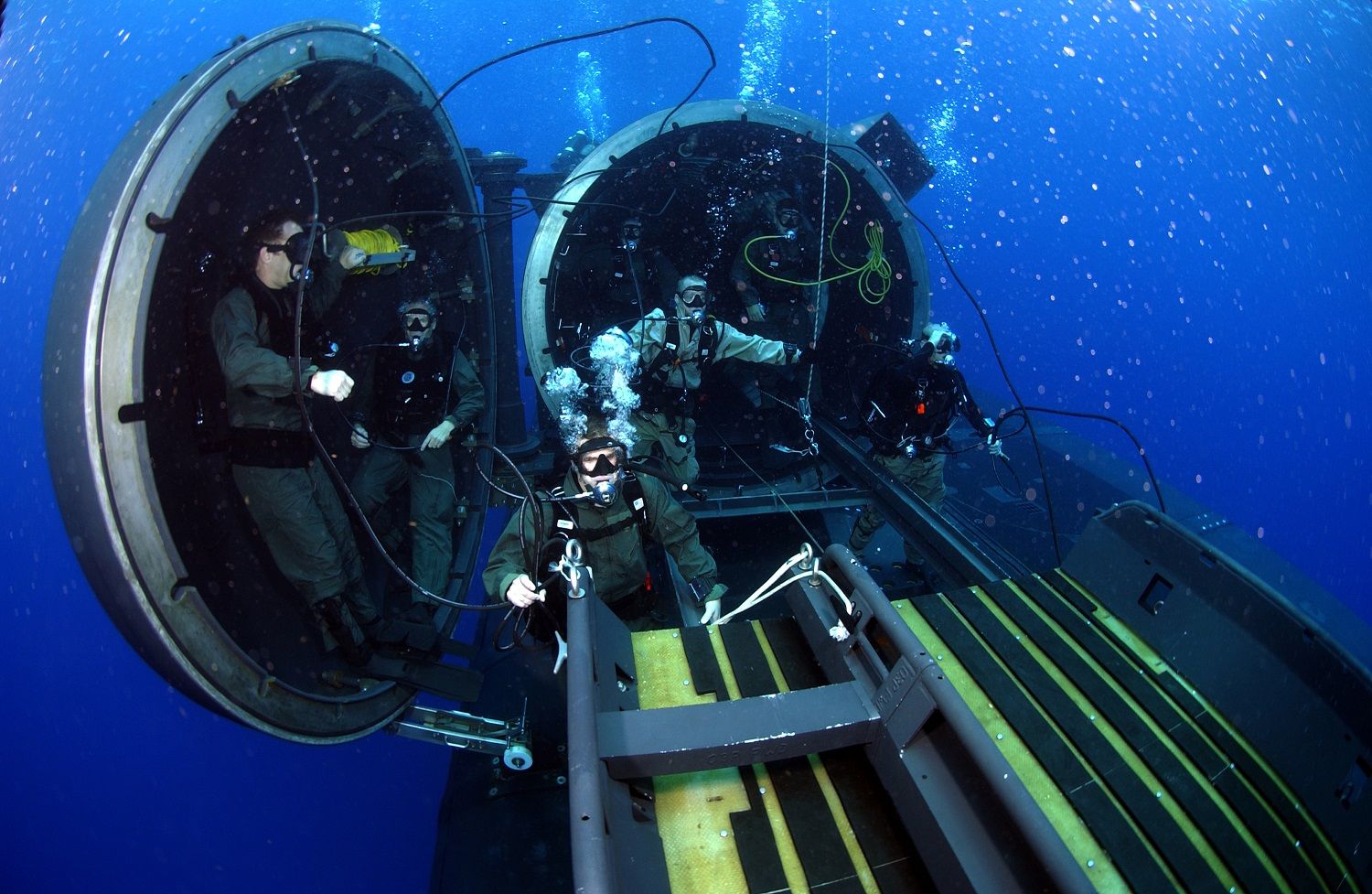
Lockheed Martin confirmed to MT the DCS had achieved its Milestone C decision in April, resulting in the go-ahead for manufacture of a total of three DCS destined for NSWC. The additional DCS are due to be delivered in 2022. According to Lockheed Martin Business Development Manager, Gero Murray, the DCS comprises a, “dry, manned submersible to deliver operators to their destination in top-physical condition ready to complete a mission,” capable of carrying a crew of two and six passengers to and from target areas.
DCS is equipped with Doppler Velocity Logs; an Inertial Navigation System; UHF tactical radio; and Obstacle Avoidance Sonar with Fathometer, company sources added. The platform measures 24ft in length with capacity to dive to a maximum depth of 100m and total range of 45 nautical miles.
“The DCS transits at 5kts at depths down to 300 ft with 24 hours of endurance. [It] can lock-in and lock-out divers down to a depth of 100ft,” Mr Murray stated, while explaining the boat is a variant of the S-301 submersible.
However, according to USSOCOM’s Programme Manager for Maritime, Capt Kate Dolloff, the DCS in its current form is not capable of launching from OHIO- and VIRGINIA-class submarine Dry Deck Shelters. Industry sources explained to MT how the command is currently devising methods to overcome this operational hurdle.
Elsewhere, NSWC is in the process of replacing its Mk 8 Mod 1 Swimmer Delivery Vehicles (SDVs) with Shallow Water Combat Submersible (SWCS) platforms, as manufactured by Teledyne Brown Engineering. Following the delivery of an initial two SWCSs to NSWC back in 2017, NSWC SEAL Teams are in the process of acceptance testing, ahead of an initial operating capability with the navy in 2020.
Industry sources associated with the development described to MT how Teledyne Brown has designed a free-flooding combat submersible, capable of accommodating six operators. The boat also features a C4ISTAR mission suite to support the full spectrum of maritime special operations.
Concerning its surface fleet, USSOCOM remains committed to further improving its inventory of special operations vessels. As an example, USSOCOM is considering options to upgrade the lethality and precision of its Combatant Craft Medium (CCM) and Combatant Craft Heavy (CCH). Ongoing work is focused on the integration of weapon systems and munitions on board the CCMs and other surface vessels, such as the Special Warfare Combatant Craft (SWCC).
Described as the ‘Maritime Precision Engagement’ concept, the effort is aimed at providing crew with a family of weapon systems supporting a range of operational requirements, including loitering munitions; precision; and stand-off engagements to counter the full breadth of targets, including surface-to-surface and surface-to-air scenarios.
However, the programme remains in the planning phase, with PEO Maritime expected to collaborate with SOF Warrior in munition selection and launcher systems. The programme is due to be launched in 2019, MT was informed.
Air
In the air domain, USSOCOM is considering a range of technology upgrades to improve the operational effectiveness and efficiency of the Air Force Special Operations Command’s (AFSOC) fleet of air frames.
Lockheed Martin continues to deliver C-130J HERCULES aircraft to AFSOC. Aircraft are upgraded into MC-130J COMMANDO II Special Mission Aircraft and AC-130J GHOSTRIDER gunships, as operated by the 1st Special Operations Wing at Hurlburt Field, Florida.
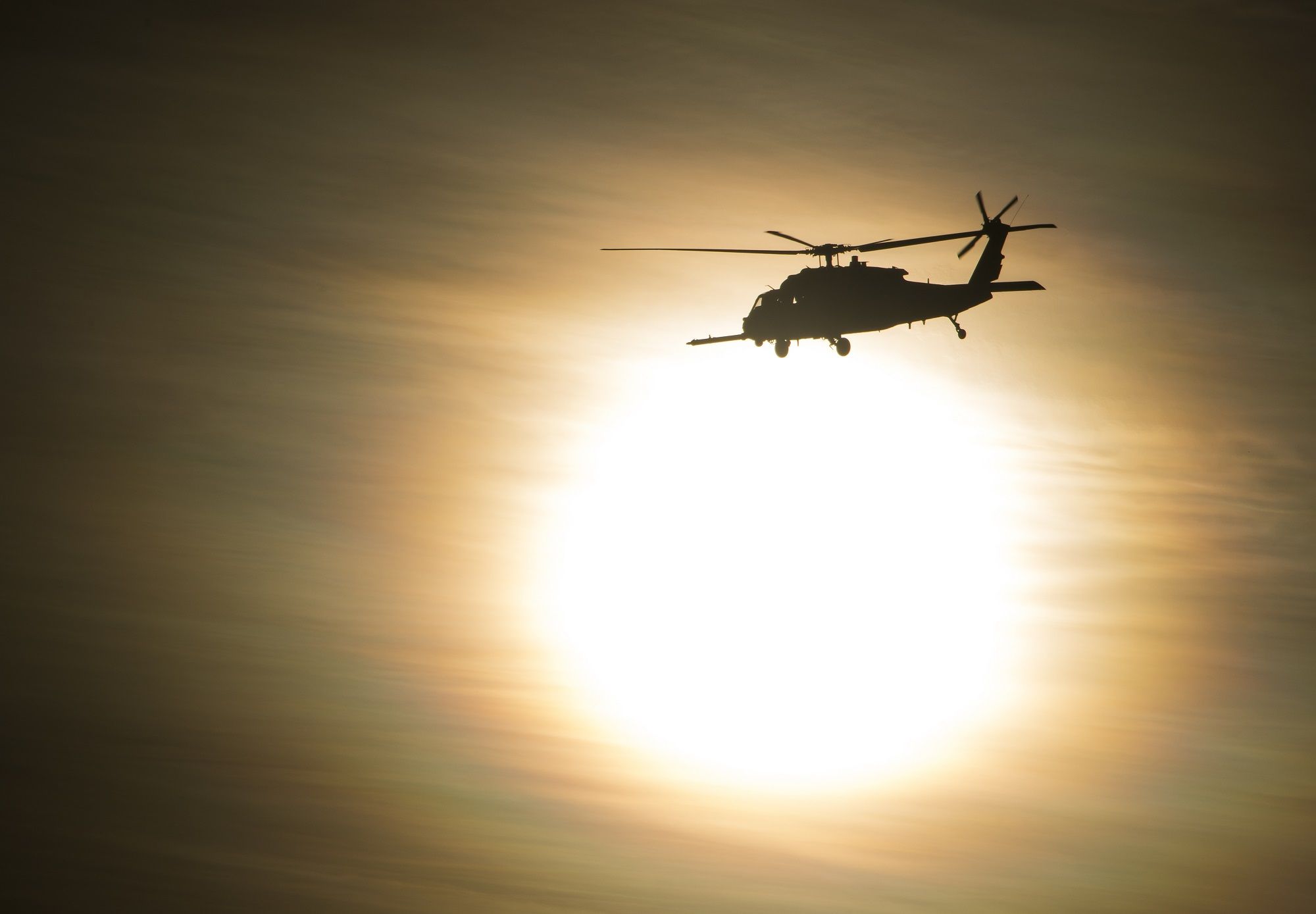
Elsewhere, AFSOC is preparing to evaluate its next-generation Combat Rescue Helicopter, which passed Critical Design Review in May 2017. Sikorsky has designed the HH-60W to satisfy the air force’s Program of Record, which calls for a total delivery of 112 aircraft to replace HH-60G PAVE HAWKs used to support combat search and rescue and personnel recovery operations. Industry sources characterise 2018 as being focused on electronic warfare for the programme in particular. Low-rate initial production (LRIP) is due to begin in the final quarter of 2019, with an Initial Operational and Test Evaluation process due to begin in 2020. The Combat Rescue Helicopter is due to reach an initial operating capability with AFSOC in 2021. The aircraft will have a maximum operating radius of 195nm, with the capability to operate in hot and high conditions up to 95°F.
Meanwhile, AFSOC CV-22s are also being upgraded with satellite communications (SATCOM) payloads necessitating the integration of radomes. An additional SATCOM capability, which must be carefully developed to provide seamless on-the-move connectivity in spite of violent interruption by rotor blade activity, is designed to increase the bandwidth capacity of helicopters during operations. Such a capability could enhance the situational awareness of air crew as well as SOF units who might be operating C2 software (similar to the Android Tactical Assault Kit) in the cargo hold of the helicopters, defence sources suggested to MT.
C4ISTAR
Finally, USSOCOM is about to benefit from some of the most technologically advanced software defined radio (SDR) technology currently available. According to Program Manager, PEO C4i, Deb Woods, the effort comprises an element of next-generation communications solutions in line with Gen Thomas’s vision of supporting the ‘Hybrid Enabled Operator’ in the future operating environment. “C4I is a critical piece to the Hyper Enabled Operator and we are working some initiatives now and some focus pieces we are working for to get to that,” Ms Woods stated. “We want to get after the transformation of our force [….] We view the individual as an operator and the PEO is cognisant of the Hybrid Enabled Operator which is focused on the dismounted SOF warrior.”
Harris Corp., explained to MT it is preparing to begin LRIP of the AN/PRC-163 SOF Tactical Communications (STC) Next Generation Handheld SDR. According to company sources, more than 150 units have already been supplied to USSOCOM as part of an initial evaluation conducted at the headquarters of the various force components. Locations include Fort Bragg, NC; MacDill AFB, FL; and Naval Special Warfare, VA.
LRIP is expected to begin by the start of 2019. Benefits to USSOCOM include the radio’s low probability of intercept and detection; Mobile Ad Hoc Networks capability; SATCOM; and ISR support through a Mission Module also designed by Harris. Additionally, PEO C4I explained to MT how it expects to award contracts over the course of 2019 to satisfy Satellite Deployable Nodes Medium and Heavy, with antenna solutions to support SATCOM across multiple frequencies including C-, X-, Ku- and Ka-bands.
Similar requirements were also described by the Joint Special Operations Command’s science and technology lead, Mark Shook, who explained how his particular sub-command was keen to leverage opportunities at a higher speed. “We want to maximise the SOF operators combat advantage and are considering different ways of solving some of the problems,” he told MT. “We need to identify opportunities to contribute to macro goals and make sure we can leverage those opportunities to the greatest extent. We are establishing that base camp in order to create an atmosphere where creating a problem-solving environment is accepted.”
Areas of interest for 2019 include Capturing Enemy Material (CEM) – an effort associated with Site Sensitive Exploitation, in which assault teams are tasked to gather and exploit technical assets found in target locations.
Solutions, Shook highlighted, would require improved analytics technology to autonomously realise the value of information already owned by the JSOC. “We are talking about deriving intelligence value from all this material captured during operations and ingesting it into intelligence systems rapidly to be used to our immediate advantage,” he explained.
Other areas of interest include UAV autonomous swarming capabilities and CUAV technology, he added, while warning of autonomous threats not just in the airborne environment, but also on land and on and beneath the water. “We are pretty happy with our products and have made significant progress. But in a couple of areas we are not as strong. How can we realise an advantage of having autonomous support capabilities for folks on the ground? [….] We are up against a much more operationally capable enemy. As technology providers, we need to be as aggressive as we can, ready with a toolbox before we put operators in that situation. At the moment, there is a little bit of disconnect so we can do better. We really want to anticipate.”
As USSOCOM positions itself to support the Hybrid Enabled Operator of the future, the international SOF community is tracking its progress very carefully as partner nation forces around the world also seek to benefit from the same or similar technologies as part of foreign military sales programmes. Such cooperation will not only enhance the global SOF network, but will also strengthen interoperability and cooperation as special operations components around the world continue to work in a joint operating environment.
Andrew White


